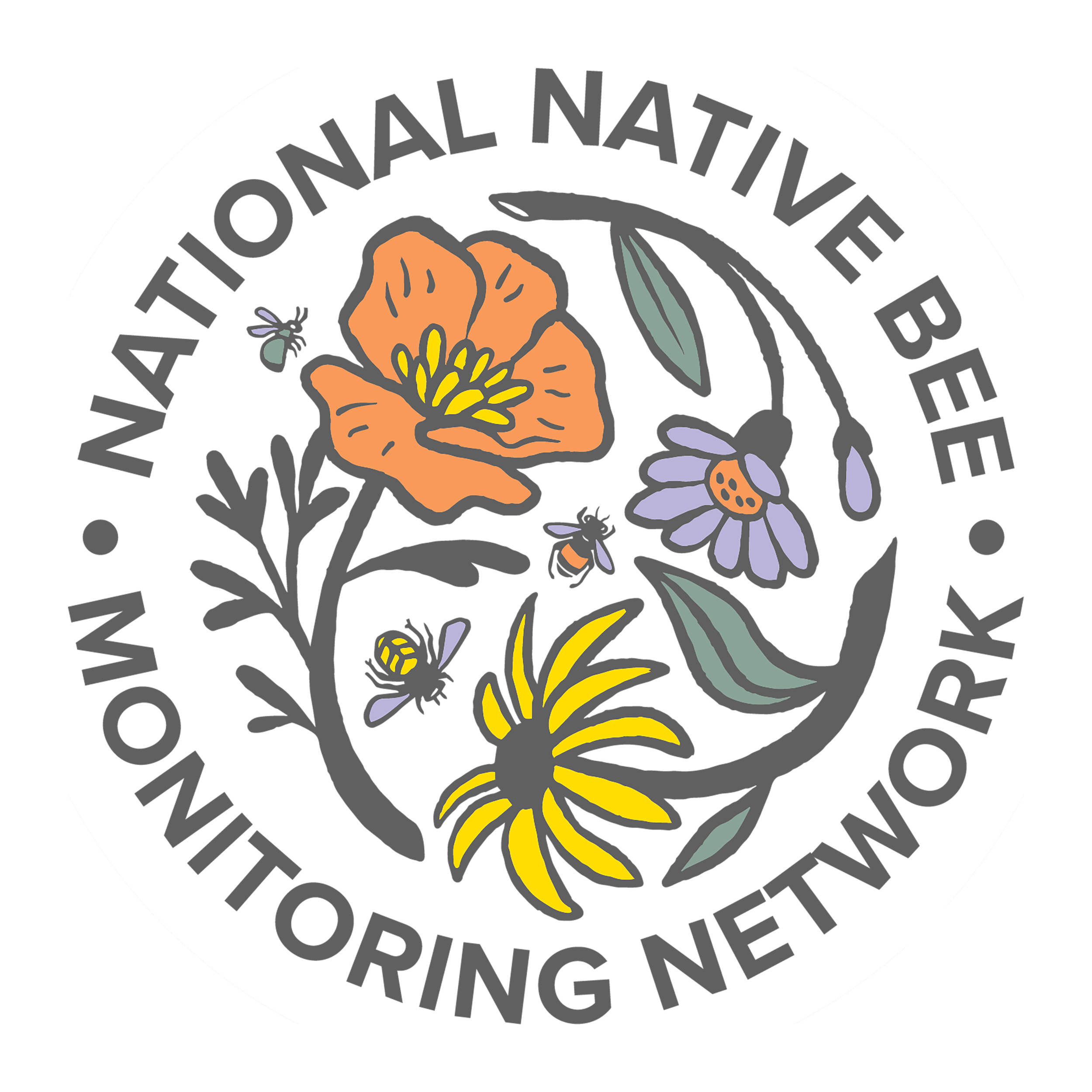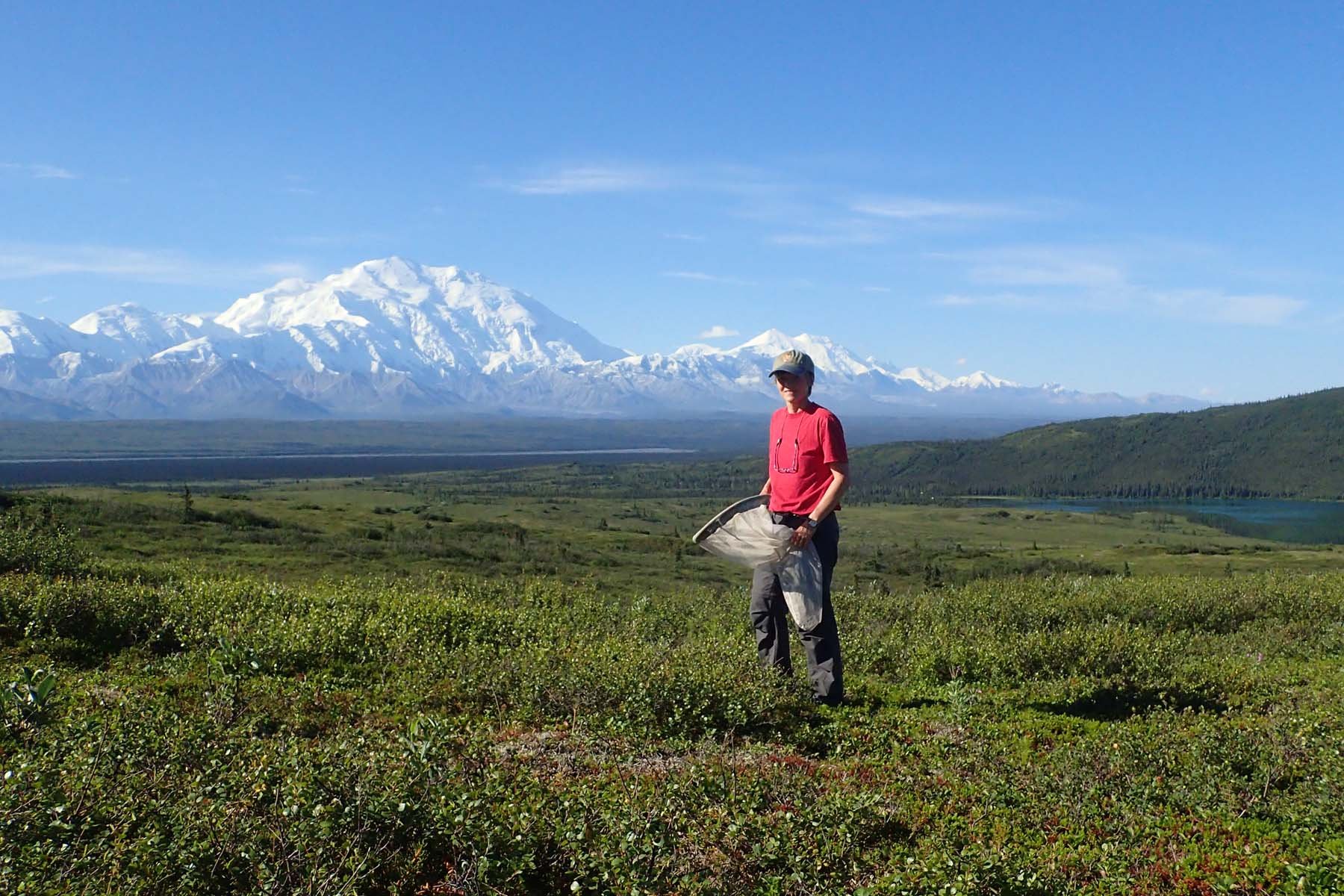Interview with Dr. Jessica Rykken
Dr. Jessica Rykken, an entomologist with the National Park Service at Denali National Park and Preserve
Dr. Jessica Rykken is a National Park Service employee who works as an entomologist at Denali National Park & Preserve. We wanted to learn more about how she ended up in Alaska, the work she’s doing there, and what some of the unique challenges and opportunities are when it comes to working in this state.
Hi Jessica! You are doing important bee work in Alaska and I wanted to ask you a few questions about it so that folks can learn more about what it’s like to work in an iconic place like Denali. First off, can you give a brief description of what your current position is and what an average day on the job looks like for you?
I’ve worked as Denali’s entomologist since 2016. This is a rare job title in the National Park Service! My day-to-day work is a mix of research and outreach. I work primarily with pollinators and my main project in Denali has been collaborating with entomologists from the University of Alaska Fairbanks to look at patterns of arthropod distribution along elevational gradients in the park. Additional inventory work is also ongoing, and I spend quite a bit of time working with the Murie Science and Learning Center to do a variety of outreach and educational activities as well as create educational media. I am currently working with a former intern to produce a field guide to bumble bees of Alaska which I hope will reach a broad audience.
In addition to my work in Denali, I’ve been able to do pollinator surveys in a number of other Alaskan parks, and recently completed a 2-year project in which we had participants from eight parks (across 11 degrees of latitude!) monitoring plant phenology and collecting pollinators from several common Alaskan plants. Obviously, I also spend a lot of time with curatorial activities, as most of our park specimens go into the collections at the University of Alaska Museum.
Can you tell us about your academic/research background and how you ended up working where you do?
I got my PhD at Oregon State University in 2004, looking at effects of forest management on riparian ground-dwelling invertebrates (beetles, spiders, millipedes, snails) in the Pacific Northwest. I then went on to do an extended post-doc at Harvard University, coordinating an All Taxa Biodiversity Inventory (ATBI) on the Boston Harbor Islands. The ATBI was focused on arthropods and was my first introduction to working in a national park (albeit a small urban one). In the course of the project, I met Sam Droege, and he encouraged me to set out bee bowls for sampling pollinators. We ended up documenting more than 170 species of bees on these tiny disturbed islands (that’s far more bee species than we currently know from the entire state of Alaska!). By the end of the ATBI I was hooked on bees, and managed to get a series of small grants with various national parks, doing bee and syrphid fly surveys. One of these parks was Denali (in 2012). This eventually led to my being hired by the park for a larger-scale project.
Establishing a research plot
My impression from having visited Alaska only a few times is that with respect to people, “community is key”. Can you speak on that, and how this impacts bee research and monitoring activities?
Alaska is a big state with few people, and especially few entomologists. We are a dedicated group though, and in Alaska, we are still very much in an “age of discovery” as far as bees and other pollinators are concerned. In addition to my work in national parks, Derek Sikes maintains a phenomenal collection and database of Alaskan pollinators and other arthropods at the University of Alaska Museum, and Matt Carlson and Justin Fulkerson at the Alaska Center for Conservation Science are also very active in bee inventory work. More recently, Casey Burns at BLM has galvanized a larger group of pollinator enthusiasts (Alaska Pollinator Coordination Group--APCG) from various state and federal agencies as well as private organizations to create and share more opportunities for pollinator inventory, monitoring, and outreach efforts.
What do you think are some of the most pressing questions about bee populations in Alaska, that could be answered through more intensive sampling?
At a basic level, we are still working on assembling a comprehensive bee species list for Alaska, even though bee diversity is comparatively low at these northern latitudes. It’s such a vast and diverse state in terms of habitats, and I think especially among the solitary bees, which can pop up in unexpected places like Arctic sand dunes, we still have many more discoveries to make. Even among the bumble bees, which seem like a relatively stable group taxonomically, new species or subspecies are being recognized and described fairly regularly. More sampling in more regions of the state will be essential to coming up with a baseline understanding of how species are distributed across Alaska.
Climate change is a significant and urgent driver of change in Alaska. Some habitats are more vulnerable to warming temperatures than others, and alpine/arctic tundra is an example of a habitat that’s literally losing ground. We have a suite of bumble bees in Alaska in the subgenus Alpinobombus that are strongly associated with tundra habitats (only one of the five species occurs in the Lower 48) and I think this group will be important to monitor with climate change. It also includes the recently described species, Bombus kluanensis, which, in Alaska, is currently known only from Denali. Alpinobombus is a holarctic group and sister species in Europe and Asia are assessed to be at significant threat from climate change, we just don’t know enough about Alpinobombus populations here in Alaska/Canada to make informed assessments.
More intensive sampling could also answer additional questions about range shifts, and shifts in phenology for bees in the face of climate change.
It may be heretical to mention here, but flies are also extremely important pollinators in Alaska, and we need to learn more about them! I include syrphid flies in all my surveys, but muscoid flies are another really abundant pollinator group.
What does the future of bee research and monitoring in Alaska look like, to you, and what do you hope to see when it comes to the integration between this work and changes in conservation policy and practice?
We have a lot of public land in Alaska, managed by various state and federal agencies, and I am encouraged to see that people from these agencies are coming together (e.g., the APCG) to promote an awareness of the importance of pollinators in our wild landscapes. I think this is a very important first step, in a place where charismatic vertebrate fauna really dominate research and management focus, funding, policy, and outreach. Making explicit connections between the health of wild ecosystems, including vertebrates, and pollinators is key. Grizzly bears in Denali rely on blueberries (not fish) to fatten up for winter, and we can no longer assume that bumble bees will always be humming along in sufficient numbers to meet the pollination demand, we must realize that they face threats too. The human connection is also important, for example, many people in Alaska rely on berries for their own nourishment.
Within the parks where I work, there is a growing realization that we need to know more about local pollinator (and insect) diversity and be able to monitor at-risk taxa in vulnerable wildland habitats, even as it is often challenging to make direct links to management policy. In general, I hope that increased awareness about the role that pollinators play in maintaining wild ecosystems will lead to increased interest and funding for pollinator research and monitoring, and this, in turn, will help inform conservation policy.
Processing bumble bee specimens



